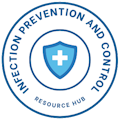
Other Topics
Cleaning & Disinfecting
 Cleaning and disinfecting are often talked about together, but they are two different and important actions that keep the healthcare environment clean and stop germs from spreading.
Cleaning and disinfecting are often talked about together, but they are two different and important actions that keep the healthcare environment clean and stop germs from spreading.
Cleaning is the process of physically removing things like dirt, dust, grime, and other spills, smears, and everyday messes from surfaces. In some cases, cleaning is enough, but in healthcare, it is not. Disinfection is necessary because surface cleaning doesn't kill germs.
Disinfecting is a different, and often separate step that kills germs on surfaces or objects.
- Cleaning and disinfecting can happen at the same time using a single product, or it may be a two-step process.
- If a two-step process is used, cleaning comes first followed by disinfecting. It is important to ensure that the surface is clean first, because if it isn’t, proper disinfection will not occur.
Another important term we talk about in IPC is "contact time" - also sometimes called "dwell time" or "wet time." This is the amount of time a disinfectant needs to stay on a surface, without being wiped away or disturbed, in order to kill germs.
Different products may have different contact times, so it is important to follow the instructions on the disinfectant product label for the organism(s) you are trying to kill.
It is important to adhere to the disinfection contact time and not rush the process. Before a new patient or resident can enter a room, and before shared equipment can be used again, you need to wait with the item wet for the full contact time. This is essential to make sure that the disinfectant has enough time to completely kill the germs.
Depending on the type of organism(s) you are trying to kill you may need a different type of disinfecting product. Check the product label or review the Environmental Protection Agency (EPA) lists using the links on this page for products effective against Clostridioides difficile, Coronavirus, and Candida auris.
For more information
EPA Lists:
Related Webinars
Please see our recorded cleaning and disinfection webinar.